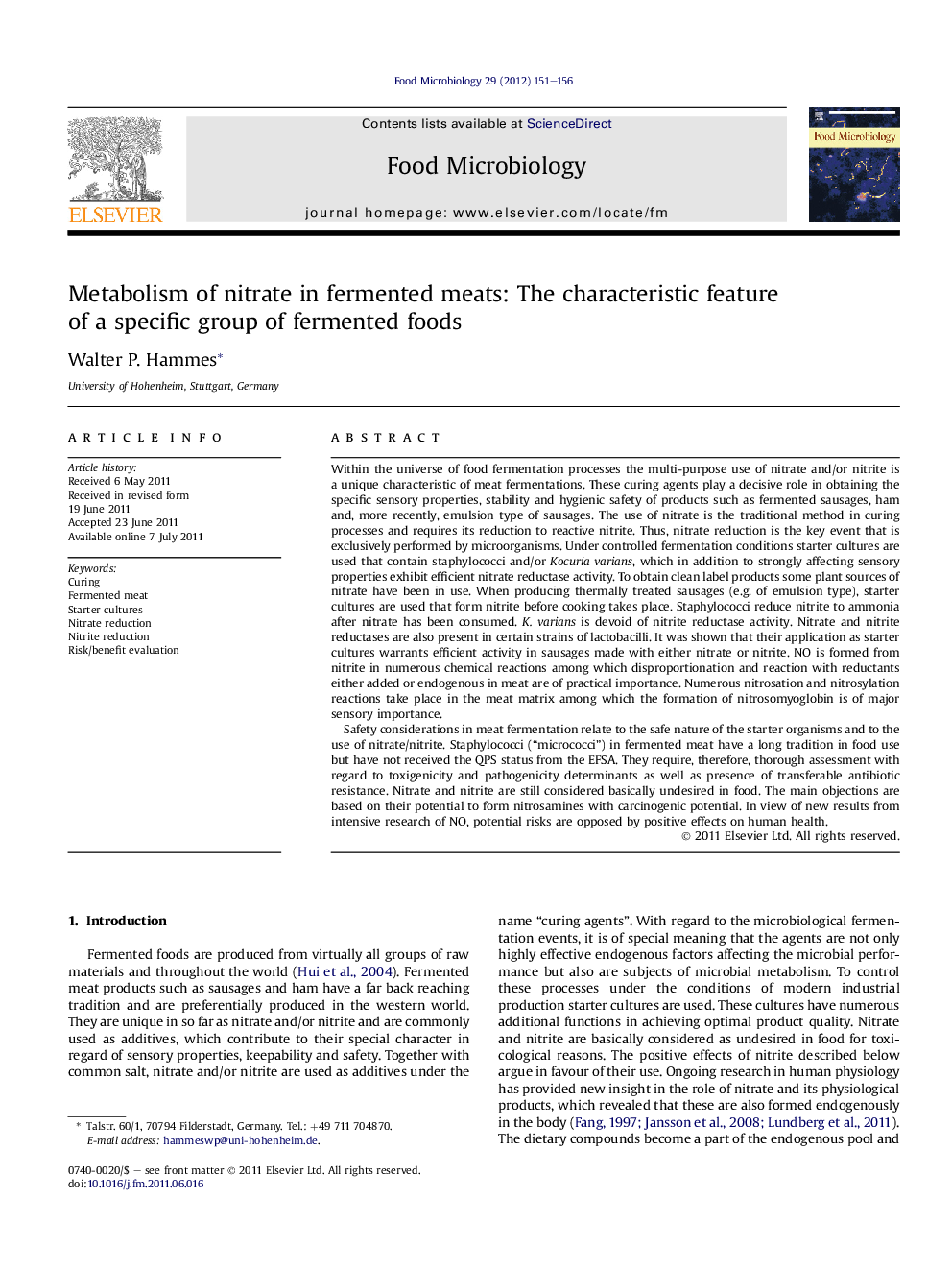| Article ID | Journal | Published Year | Pages | File Type |
|---|---|---|---|---|
| 4363075 | Food Microbiology | 2012 | 6 Pages |
Within the universe of food fermentation processes the multi-purpose use of nitrate and/or nitrite is a unique characteristic of meat fermentations. These curing agents play a decisive role in obtaining the specific sensory properties, stability and hygienic safety of products such as fermented sausages, ham and, more recently, emulsion type of sausages. The use of nitrate is the traditional method in curing processes and requires its reduction to reactive nitrite. Thus, nitrate reduction is the key event that is exclusively performed by microorganisms. Under controlled fermentation conditions starter cultures are used that contain staphylococci and/or Kocuria varians, which in addition to strongly affecting sensory properties exhibit efficient nitrate reductase activity. To obtain clean label products some plant sources of nitrate have been in use. When producing thermally treated sausages (e.g. of emulsion type), starter cultures are used that form nitrite before cooking takes place. Staphylococci reduce nitrite to ammonia after nitrate has been consumed. K. varians is devoid of nitrite reductase activity. Nitrate and nitrite reductases are also present in certain strains of lactobacilli. It was shown that their application as starter cultures warrants efficient activity in sausages made with either nitrate or nitrite. NO is formed from nitrite in numerous chemical reactions among which disproportionation and reaction with reductants either added or endogenous in meat are of practical importance. Numerous nitrosation and nitrosylation reactions take place in the meat matrix among which the formation of nitrosomyoglobin is of major sensory importance.Safety considerations in meat fermentation relate to the safe nature of the starter organisms and to the use of nitrate/nitrite. Staphylococci (“micrococci”) in fermented meat have a long tradition in food use but have not received the QPS status from the EFSA. They require, therefore, thorough assessment with regard to toxigenicity and pathogenicity determinants as well as presence of transferable antibiotic resistance. Nitrate and nitrite are still considered basically undesired in food. The main objections are based on their potential to form nitrosamines with carcinogenic potential. In view of new results from intensive research of NO, potential risks are opposed by positive effects on human health.
► The curing agents nitrate and nitrite affect the characteristics of fermented meat. ► Microorganisms are crucial for formation of reactive intermediate compounds (RNI). ► Starter cultures with nitrate reductase activity control the fermentation process. ► They also reduce microbiological risks and those of N-nitroso compounds formation. ► Evidence increases that dietary nitrate exerts beneficial effects on human health.
